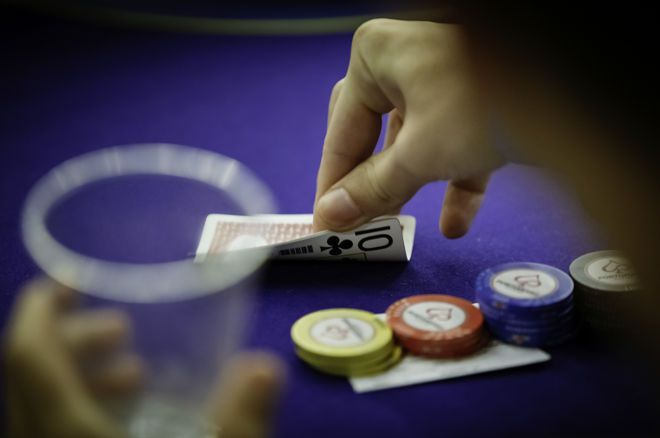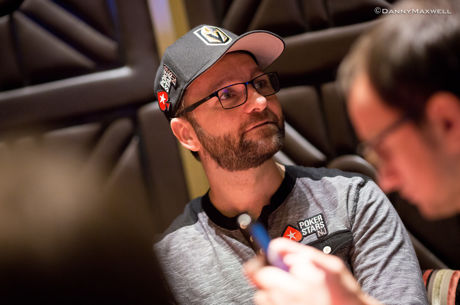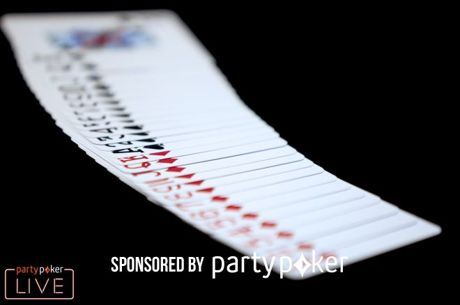Fun Players Win Pots, Professionals Get Value

Not long ago, I played a tournament where in the very first hand a player open-raised under the gun to 10,000 from his 20,000 starting stack at the 25/50 level.
Everyone assumed he mistakenly grabbed two 5,000 chips instead of two 100 chips, but afterwards he explained he had bet this amount on purpose as he flipped over pocket aces. His reasoning was that he didn't want to get sucked out on in the very first hand.
The player was demonstrating in an extreme way a principle that actually isn't all that uncommon. Fun players seem to prefer winning pots over getting value, while professionals take the opposite approach.
Here are a couple of suggestions of how fun players can start moving away from that mindset to become more like the professionals and increase their profits.
1. Don't Make Big Bets Designed to Get Folds When You Have a Strong Value Hand
The pocket aces hand is a clear example of how fun players often make this mistake. In fact, it may be more accurate not to call guys like this one a "fun" player, but a "fear" player. The pain of losing with the best hand overrides such players' desire to get called by worse.
As a recreational player myself, I too sometimes experience a bit of this fear when I have a hand like ace-king offsuit. Oftentimes I will overplay it preflop because, it can be tough to play postflop against players who tend to put you on that exact hand by default.
This is flawed thinking on my part. If my opponents are willing to call a normal-sized raise with worse AxXx and KxXx hands, then I am doing myself a disservice by making a larger bet that forces many of those hands to fold.
Professionals do not make this mistake. When they expect to have the best hand, they bet as much as they think their opponent will call with worse. This approach locks up a bigger profit preflop and also sets them up for more profitable opportunities postflop, even if it means they will occasionally lose the pot.
The thing is, it isn't always "fun" to play this way, because it means having to make tougher postflop decisions, including difficult folds.
To give an example, some time ago I was in a tournament in which I was down to 17 big blinds, and the action folded around to me in the hijack with pocket tens. In the past, I would have just gone all in with this hand because I feared having a standard raise called in two or three spots then having to fold when an overcard inevitably came on the flop. I now realize that this is a waste of a strong value hand.
I opened and only an older player in the big blind called. The flop came Qx7x3x-rainbow. I bet, he called, and the turn brought an offsuit 9x. I bet again and this time he raised. I did not see much he could be bluffing with, so I folded and left myself with just over 10 big blinds.
It wasn't very fun to put in so much of my stack and then have to fold. I can see why recreational players do not play this way, but I think professionals are more pained by missing value than they are by losing pots. I strive to be more like them.
2. Make Small Bets Designed to Get Calls When You Have a Marginal Value Hand
To recreational players, this may be one of the most confusing things that professionals do. Not many of us have experience with betting bottom pair in order to get called by ace-high, but if you can eliminate enough better hands from a capped range that contains enough calling hands you beat, then the bet makes sense.
This is an area that I am working on with my new coach. It sounded weird to me at first, but once I looked at the math behind the play, I started to understand.
Professionals will often bet one-third of the pot with marginal hands into capped ranges. The opponent has to continue with three out of four hands in his range in order to prevent this bet from automatically turning a profit. When their preflop calling range is too wide and their postflop range is capped, it can be hard to continue with 75 percent of hands.
Additionally, when using the one-third pot-sized bet, you only need to win more than 25 percent of the time to turn a profit. This means you can lose the pot the majority of the time and still make money. In order to improve, recreational players must understand this concept and be willing to make these bets once they realize that losing the pot doesn't mean you are losing the game.
An example of this came up in a hand I played where a new player to the table limped under the gun. Action folded around to the small blind who completed. I raised from the big blind with pocket tens and only the under the gun limper called.
On a Jx3x3x-rainbow flop, I bet and he called again. The turn was an Ax. I figured that his range consisted of a lot of AxXx and JxXx hands, others with two Broadway cards, and small-pair hands. I had about 30 percent equity against this range, so I made a one-third pot-sized value bet to get called by the weakest parts of his range. I believe my turn sizing also helps to cap his range even further since most people would raise the turn for value with the top of their range when facing this small sizing.
He called again and the river brought an offsuit 7x.
At this point, I felt comfortable completely removing all hands better than one pair from his range. Even AxKx would have likely raised by now. I expected his range to be capped at hands like AxQx and KxJx. On the river, I made a roughly 40 percent pot-sized bet to either get a hero call from the pairs I beat or potentially get a hero fold from his worse JxXx hands, depending on which type of mistake this opponent preferred.
Many recreational players would just check and call the river, but I think this is often just a manifestation of our need to see if we get to win the pot. Instead, I saw an opportunity to eek out a bit more value from an unknown in a player pool which tends to calls too often. To my surprise, this player raised, I folded, and he showed 6x4x-suited which was a complete bluff that had no pair or draw on the turn.
This result was less than ideal (and not very fun), but I understand that this was a very rare occurrence. The vast majority of players in this field would have been willing to call my river bet with worse and very few of them were capable of taking the line this player did as a pure bluff.
If my goal was only to win pots, this would have been devastating. Instead, my goal was to seek out as much value as possible, so everything went according to plan in my mind. In fact, had he not shown his bluff, I would have assumed he had me beat somehow and kept playing the same way against him. As it turns out, he gave me free information that helped me get a double-up from him a few hands later.
Conclusion
Nineteenth-century card shark Canada Bill Jones is credited with the quote "it's immoral to let a sucker keep his money." It's a line that is often used in poker culture, including in everyone's favorite 1998 movie Rounders.
That mindset is what separates the professionals from the fun players. Learn to doggedly seek out value with no attachment to short term results and eventually the money will follow.









